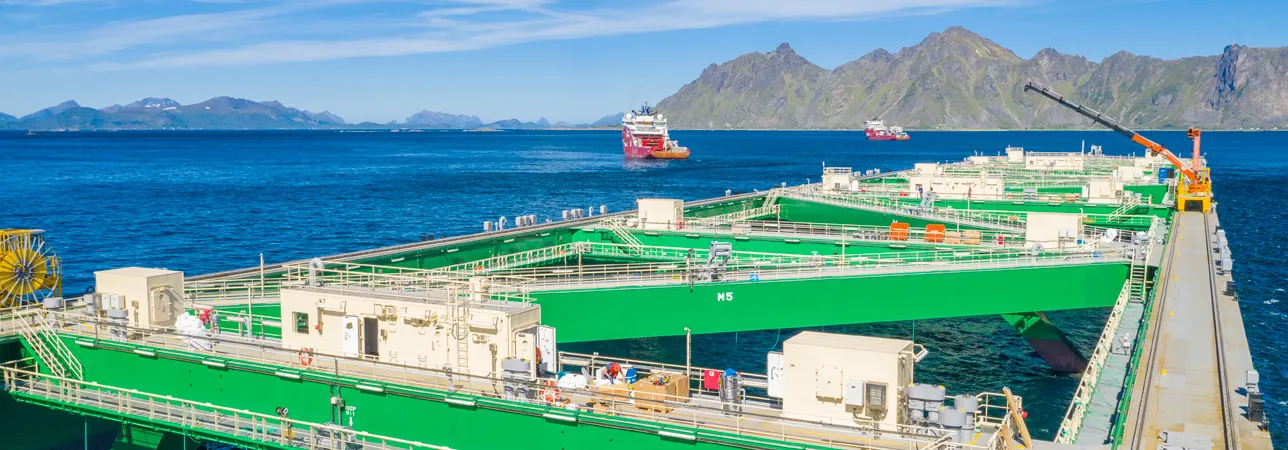Ordered by the Norwegian company Nordlaks, the 385-metre-long ship-shaped Jostein Albert Havfarm is a revolutionary salmon farm which was built to hold 10,000 tonnes of fish in six 47 x 47-metre nets.
Nordlaks’ Havfarm 1 is the largest exposed fish farm in the world to date, capable of accommodating 10,000 tonnes of salmon at any given time (about two million fish). Highly integrated automated fishing systems ensure high efficiency and a low workload. Typical examples of these advanced support systems are the fish feeding arrangement, dead fish handling, rail-mounted service units, etc.
The main dimensions of the fish farm:
- Length overall (approx.): 385 m
- Length between pp: 374 m
- Moulded breadth: 59.5 m
- Depth to main deck: 37.75 m
- Operational draught: 30.7 m
- Crew: 10 persons
- Passengers (day/short term): max. 12 persons
This is a highly advanced fish farming installation that is designed for the cold climate and harsh sea conditions along the Norwegian coast. The DNV GL site team, headed by Zheng Wei, managed the newbuilding survey work at Yantai Raffles Offshore Shipyard.
“Due to the novel design concept and the ship’s big size, the DNV GL site team attending to the newbuilding survey had a very challenging as well as interesting job following up on the fabrication quality,” says Zheng Wei, Senior Surveyor and Project Manager of Havfarm 1.
DNV GL has been contributing in all project phases – from risk identification and concluding quality standards to design verification and building surveys. All these assurance activities ultimately led to the issuance of a site certificate giving access to carry out aquaculture activity in Norwegian waters.
Currently, Havfarm 1 Jostein Albert is operating with DNV GL classification with the following class string:
- OI - Fish Farming Installation Posmoor NYTEK
The integrity of Havfarm 1 is continuously inspected and documented through periodic DNV GL surveys on board. These surveys cover both the condition of marine systems, together with fish-specific functionality preventing fish escape, as well as traditional health and environmental issues.
The second offshore fish farming installation in the Havfarm series, Havfarm 2, is currently planned and designed. Havfarm 2 will have a similar capacity to its predecessor but will operate in Dynamic Position mode, meaning it is free to move around in the ocean space and seek shelter in rough weather. Like Havfarm 1 Jostein Albert, DNV GL is involved in all project phases on Havfarm 2 through the classification approach.
